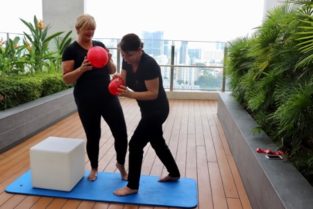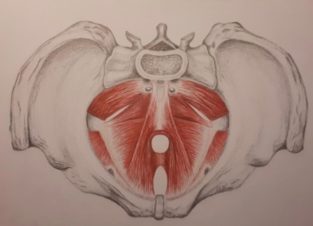Shining a spotlight on 'The Pelvic Diaphragm'
WEBINAR RECORDING

Julie Hammond & fiona palmer
Shining a Spotlight on "The Pelvic Diaphragm" Webinar Recording
Cost: $60AUD
Recordings will be available to view for a further three months after purchase.
Webinar Description:
Following on from their successful introduction to Balancing the Diaphragms, Julie Hammond and Fiona Palmer will be shining a spotlight on the male and female pelvis. Delving deep into the anatomy of the pelvis, postural assessment and the importance of the starting position of the pelvis for treatment protocol and exercises. Common pelvis complaints will be looked at, along with strategies using manual and movement applications.
Julie and Fiona both have a passion for anatomy and in particular pelvic anatomy, and guarantee you will finish this workshop with a love for pelvis anatomy!
In this 2.5 hour webinar you will receive:
- An understanding of the male and pelvis anatomy
- Look at common postural patterns and their implication for pelvic diaphragm dysfunction
- Movement and manual applications related to pelvic dysfunction
- An understanding of how health professionals can work together for more efficient outcomes for clients.

About Julie Hammond:
Julie is director and lead teacher of Anatomy Trains Australia and New Zealand; she has been in the bodywork industry for over twenty years whilst running a busy practice in Western Australia. She is a self-confessed anatomy nerd, with a passion for the pelvic floor, jaw and foot anatomy and dysfunction.
It is through her clinical practice observations that Julie became interested in the link between the diaphragms in the body, and how focusing on a more global approach achieved greater results with her clients. She teamed up with Fiona Palmer, who is a UK Anatomy Trains teacher and Pilates teacher, to develop 'Balancing the Diaphragms'.
Julie contributed a chapter to David Lesondak’s new book ‘Fascia, Function and Medical Applications'. This chapter is based on a Structural Integration case study, on a client who had experienced pelvic floor pain and dysfunction after the birth of her son. Julie is currently studying Human and Medical Science with a strong focus on research.
About Fiona Palmer:
Fiona has been a movement therapist for the last twenty-five years, and bodyworker for more than twenty years. Her client base of rehabilitating after injury, surgery, childbirth has become her passion.
Fiona's background is in clinical Pilates, pelvic floor dysfunction and low back pain. She runs a busy clinic in Clare's small bustling town in Suffolk, and runs an online Pilates and hypopressive breathing and postural exercise business.
Fiona is also one of the Anatomy Trains teachers allowing her to share her passion for anatomy and the body. Seeing some clients for either movement or manual therapy alone and others for a combination gave rise to some questions.
For example, why do some people fair better than others? Is pelvic floor dysfunction about something other than the weakness that most often gets the blame? Does better breathing help back pain and the pelvic floor? A more "wholistic" or global approach seems to offer more significant benefits in the long term. The links between the diaphragms became more interesting when she started introducing hypopressive exercise into her exercise programme.
Fiona teamed up with Julie Hammond, director of Anatomy Trains Australia and New Zealand and together, they have developed Balancing the Diaphragms.
